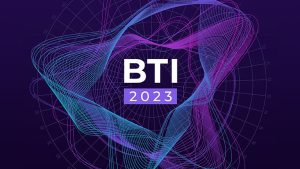It’s fair to say the Retail sector has been going through a period of recalibration in recent years. Having been forced to navigate intermittent periods of lockdown and non-negotiable closures of factories, the past 24 months have been anything but business as usual. The onset of the pandemic fundamentally changed the fabric of Retail operations, forcing some market participants to significantly scale back operations and adjust their business models – a phase of adjustment that underscored the pronounced importance of business agility.
If pandemic-driven constraints weren’t enough, ongoing macro and geopolitical challenges continue to undercut retail growth, meaning the parameters of innovation must be broadened to help retailers navigate the current market tempest. Adopting a firm and comprehensive ‘business agility’ strategy is especially critical for the Retail sector right now, signaling the ease in which organisations can strategically channel and leverage internal resources to drive growth. A robust business agility strategy can help amplify a retailer’s sustainability agenda, their inventory management capabilities, and store profitability, while facilitating rich data-led decision making. Let’s explore the case for business agility in the Retail sector in a little more detail.

Elevated sustainability credentials
The sustainability agenda has rapidly ascended the list of business priorities, particularly in light of recent findings from the IPCC. Retail activity incurs a hefty environmental cost, with a far-reaching carbon footprint driven by worldwide shipping and single use plastics, meaning there is a sizable body of work confronting the sector when it comes to sustainability. A culture of business agility will help retailers fine-tune their operational frameworks ‘on the go’ to be more environmentally friendly and expedite the Net Zero mission. However, this vision will take significant financial backing, which is not always forthcoming at board level.
According to results from Expleo’s Business Transformation Index 2022 report, only 24% of Retail respondents attested to be investing in new sustainable business solutions in the fight against climate change, compared to 50% of respondents in the telecoms and media sector, and 43% in the healthcare and pharmaceutical sector. In terms of the products that are shelved and shipped, retailers of every grade have a responsibility to ensure that materials are sustainably sourced, while figuring out new ways to embed better recycling practices into their business. This new approach could see goods being produced out of reusable plastic and hemp, or internal sourcing methods being developed to limit shipping requirements.
Rapid, data-led decision making
In order to make fast decisions, retailers need the right data. The contours of a retailer’s business strategy have evolved significantly in recent times, placing a high premium on rich data-led decision making. Being able to quickly aggregate and analyse key customer data is a core facet of any business agility strategy. Leveraging tools powered by AI and Machine Learning software can help glean new data insights to direct strategic decisions and solve complex business problems. This can also help retailers establish a more data-driven understanding of core demographics, which is of critical importance due to fierce sectoral competition.
Rich consumer data also broadens the insights on key demographics, providing a more crystalised view of spending habits and product popularity among different customer segments, which in turn can enable retailers to re-profile their store based on what they’re selling. In-store footfall can also be monitored using cameras and WiFi data points, which can then be harnessed to facilitate a wholly user-centric retail experience. This invaluable intel can inform the merchandising team in terms of in-store product placement, and help them identify ‘prime sites’ in their store.
Better inventory management
Elite-grade inventory management represents another core strand of true business agility, enabling retailers to plan their purchasing schedule tactfully and strategically, in line with consumer demand. For the smaller scale retailers that don’t have the square footage to accommodate a full product portfolio, Click-and-Collect services offer an excellent vehicle to entice the customer into the bricks and mortar store, without having to shelve a full suite of products. Moreover, retailers can leverage the power of Click-and-Collect to identify additional items (if any) that consumers choose to buy in store while they’re there on a collection mission. Often positioned at the back or centre of the store, Click-and-Collect is a sure-fire way of facilitating more agile inventory management, granting retailers a lot more flexibility around the products they can sell in-store at any given time, helping them react to product demand in a much more seamless and streamlined manner.
The rapid digitisation of the Retail market presents a range of challenges and opportunities for retailers that are online-centric or bricks and mortar focused. However, one thing is for sure, the case of business agility is top priority for retailers across this wide spectrum. For larger operators, agility extends to how they do business on a day-to-day basis, as well as but also at a Head Office level in terms of supporting a remote workforce. For these organisations, their biggest asset is their people, and they must be supported digitally. For smaller retailers, business agility will help them maximise the opportunity of having a captive audience of consumers in-store to increase their basket size. For smaller operators, another key point will be understanding the intrinsic link between digital transformation and the formulation of a full-bodied business agility strategy. With Expleo’s BTI report 2022 finding that 35% of retail respondents claimed business agility coaches were the most difficult roles to recruit for, retailers can out-source this important business requirement and lean on the experts who can give them the tools to fine-tune their business agility on a routine basis.





